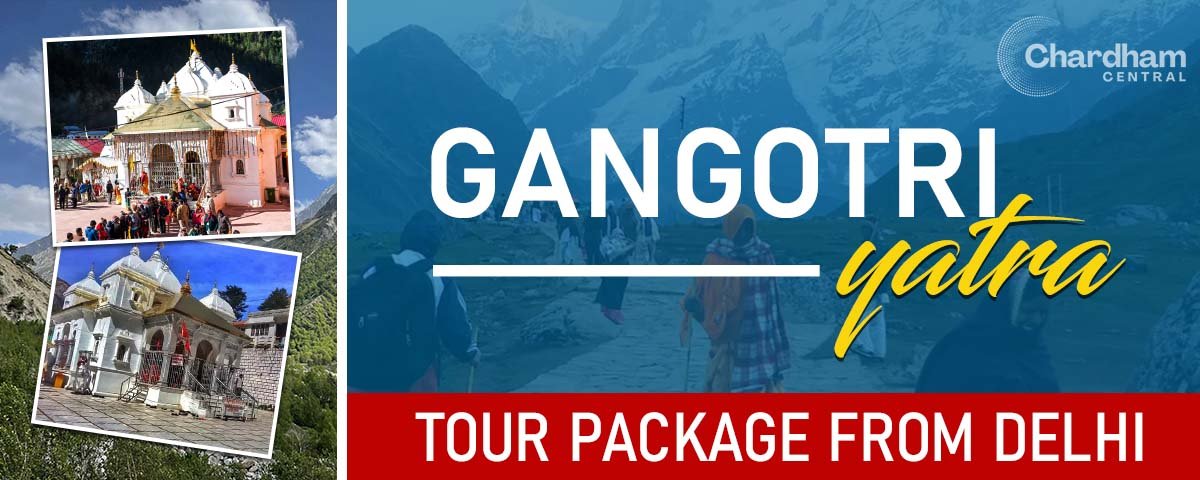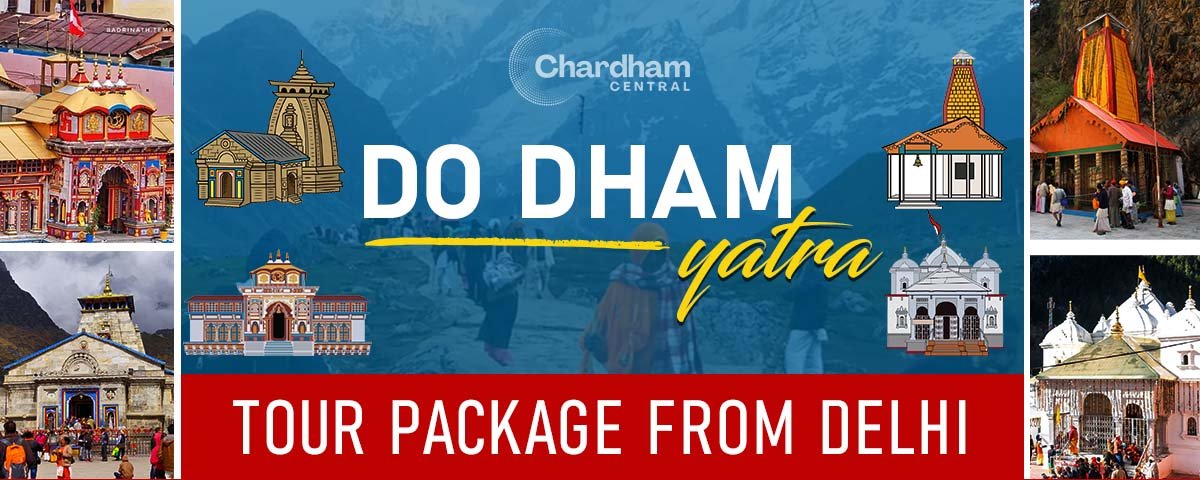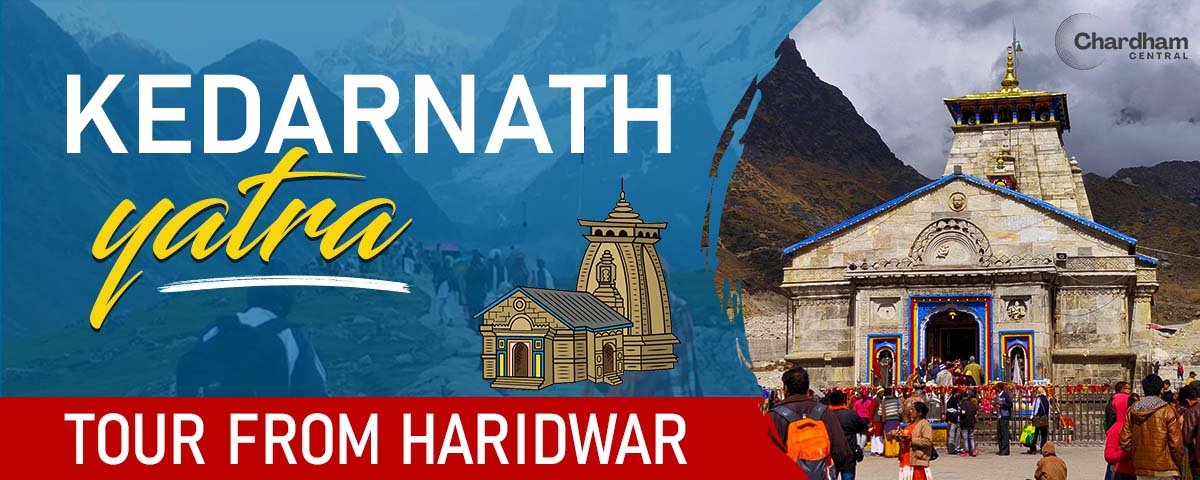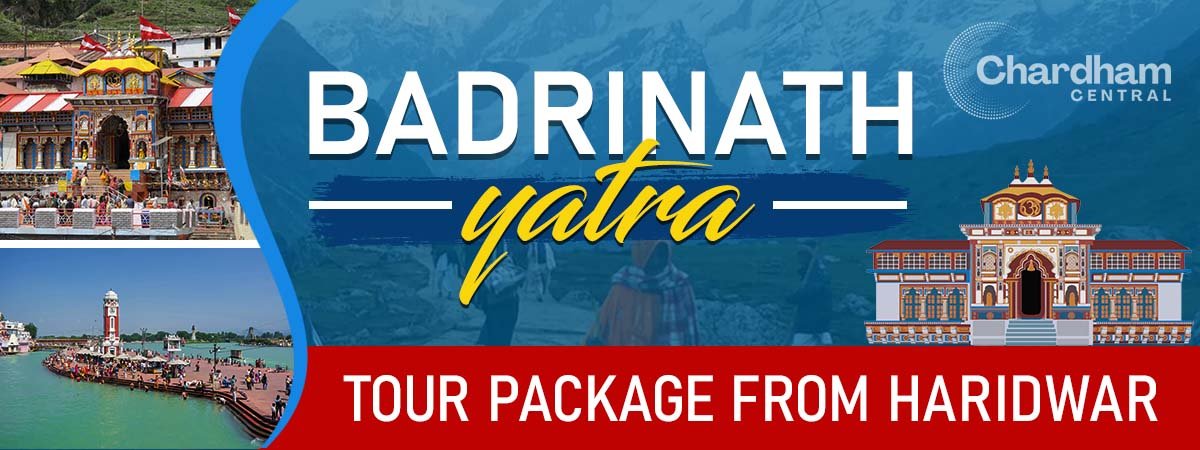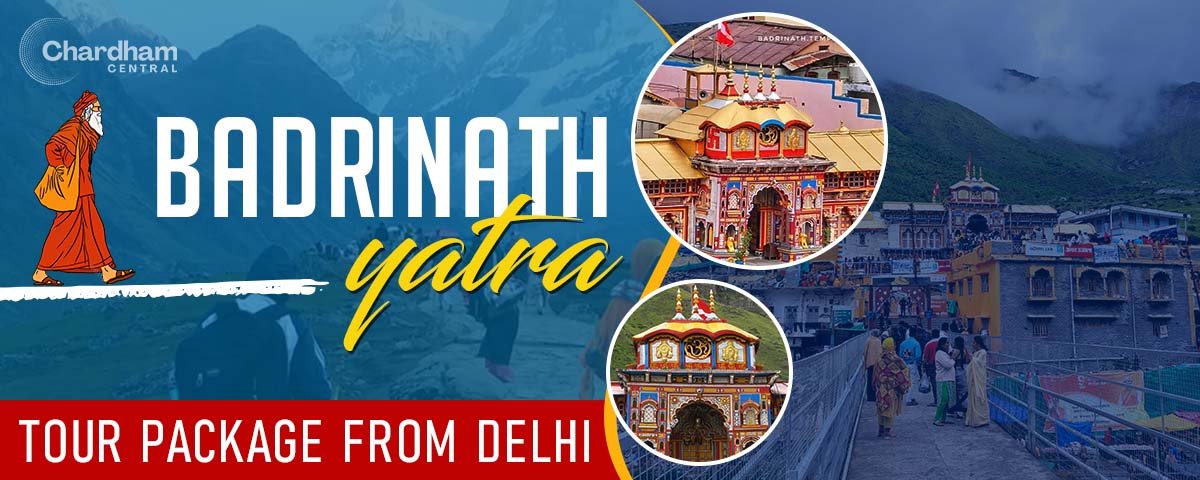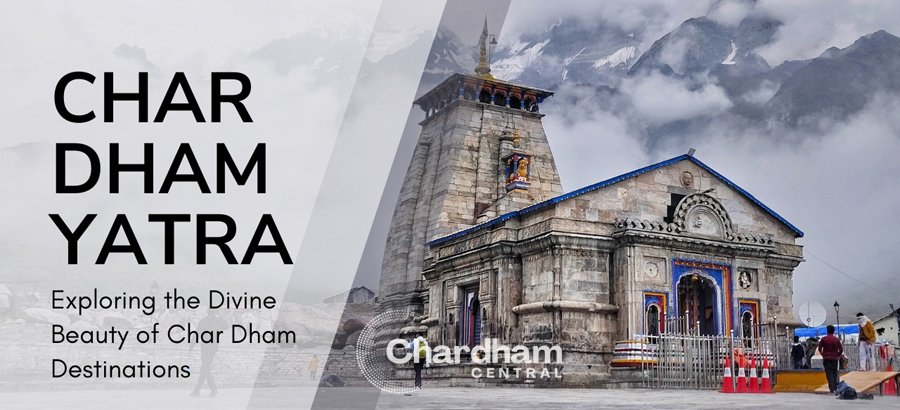
Places to visit in Kedarnath Temple
Kedarnath, a sacred town located in the Rudraprayag district of Uttarakhand, is home to the revered Kedarnath Temple dedicated to Lord Shiva. It is one of the four Char Dham sites in Uttarakhand and also one of the 12 Jyotirlingas in India. Every year, when the Kedarnath Temple opens its doors, lakhs of pilgrims begin on this spiritual journey to seek divine blessings.
In addition to the temple, there are several famous places in Kedarnath that pilgrims and travelers love to explore from spiritually significant sites to scenic and adventurous spots nestled in the lap of the Himalayas. Whether you come for blessings or to enjoy the beauty of nature, Kedarnath offers a memorable experience.
Best Places to Visit in Kedarnath
If you are visiting Kedarnath Temple, there are many beautiful and holy places nearby that you can also explore. These spots make your spiritual journey even more special. Whether you are looking for ancient temples, scenic views, or peaceful nature, you will find many good places on the way to Kedarnath. From old caves and sacred ponds to viewpoints and quiet valleys, these places add both spiritual value and natural beauty to your trip. Here are some of the best places you can visit during your Kedarnath Yatra.
1. Bhim Shilla
Bhim Shila is a huge rock located just behind the Kedarnath Temple. During the 2013 floods, when strong water currents and debris came towards the temple, this big rock rolled down from the mountain and stopped right behind the temple. It acted like a shield and saved the temple from getting destroyed. Since then, Bhim Shila is seen as a miracle and a sign of divine protection.
According to local beliefs, the Bhim Shila story is connected to the Pandavas. It is said that Bhim once chased Lord Shiva to ask for forgiveness. To stop Shiva, Bhim hit his heavy mace (gada) on the ground, and this big rock appeared. That’s why people call it Bhim Shila. Today, many pilgrims visit Bhim Shila, touch it, and pray, believing it is a holy and powerful symbol that protected the Kedarnath Temple.
Location: Bhim Shila is located just behind the Kedarnath Temple, approximately 50 meters from the temple complex.
How to Reach: To reach Bhim Shila, simply walk a few steps from the main Kedarnath Temple area to the back of the temple. Since it’s very close, pilgrims can easily visit it right after offering prayers at the temple.
2. Bhairavanath Temple
Bhairavnath is believed to be the protector (Kshetrapal) of Kedarnath, especially during the winter months when the temple remains closed. He carries a trishul (trident) and rides a dog, and is considered one of Lord Shiva’s fierce forms. Devotees believe that their Kedarnath Yatra is incomplete without visiting Bhairavnath Temple and offering mustard oil to Lord Bhairav.
As per legend, when the demon Bhasmasur misused the boon given by Lord Shiva to destroy everything, Lord Vishnu took the form of Mohini and made Bhasmasur destroy himself. After this, fearing more demonic threats, Lord Shiva appointed Bhairavnath to guard Kedarnath. Even today, he is worshipped as the divine protector of the temple.
Location: Bhairavnath Temple is located just about 650 meters uphill from the main Kedarnath Temple.
How to Reach: To get there, pilgrims must first reach Gaurikund, the last motorable point on the route. From Gaurikund, devotees has to undertake a 18 km trek to reach the Kedarnath Temple. After reaching Kedarnath, it’s an easy 650 meter uphill walk to visit Bhairavnath Temple, which offers beautiful views and holds deep spiritual importance.
3. Adi Shankaracharya Samadhi
Adi Shankaracharya is considered one of the greatest spiritual leaders and the ideal Sannyasi in Hinduism. He played a key role in reviving Sanatan Dharma and established the Char Dham pilgrimage circuit. It is believed that Adi Shankaracharya visited Kedarnath and attained mahasamadhi (final liberation) here at the young age of 32. His Samadhi is located just behind the Kedarnath Temple and is a peaceful, spiritual spot for devotees. After the 2013 floods, the Samadhi site was rebuilt and now stands as a symbol of his teachings and devotion. Pilgrims visiting Kedarnath often pay their respects here, remembering the great saint who helped shape Hindu philosophy.
Location: Adi Shankaracharya Samadhi is located just behind the Kedarnath Temple, approximately 140 meters away.
How to Reach: After offering prayers at the Kedarnath Temple, you can easily walk to the Samadhi site. There is a well-marked pathway leading behind the temple. The route is gentle and takes just 2 minutes on foot, making it convenient for all pilgrims to visit and pay their respects.
4. Tungnath
Tungnath, located in Chopta Valley, is the highest Shiva temple in the world at an altitude of 3,600 meters. It is the third temple (Tritiya Kedar) in the Panch Kedar circuit and is believed to be over 1,000 years old. According to legend, Lord Shiva’s arms (bahu) appeared here when he took the form of a bull. The name “Tungnath” means “Lord of the Peaks”.
The trek to Tungnath is short and scenic, making it perfect for pilgrims and beginners. During the time when Kedarnath is closed, many pilgrims visit Tungnath instead. The temple is closed in winter due to heavy snowfall. If you’re visiting Kedarnath, consider adding Tungnath to your trip for a peaceful and holy experience in the Himalayas.
Location: Tungnath Temple is located in the Rudraprayag district of Uttarakhand, about 3.1 km uphill from the scenic village of Chopta.
How to Reach: Pilgrims first need to reach Chopta, which is the nearest motorable location to Tungnath. The last drivable point is near Neelkanth Homestay in Chopta. From there, a 3.1 km trek through scenic meadows and peaceful forest trails leads to the temple.
5. Gaurikund
Gaurikund is a holy place dedicated to Goddess Parvati (also known as Gauri) and serves as the base point for the trek to Kedarnath Temple. According to Hindu mythology, it is believed that Goddess Parvati performed intense penance here to win Lord Shiva’s heart. After years of devotion, Lord Shiva finally appeared and accepted her as his wife at this very spot.
Gaurikund is also known for its hot water spring, where many pilgrims take a ritual bath before starting their spiritual journey to Kedarnath. The place is also linked to the story of Lord Ganesha’s birth, as it is believed that Goddess Parvati gave him life here at the lake, also called Parvati Sarovar or Gauri Lake. This sacred site is not only spiritually important but also the main gateway to the Kedarnath trek, making it a must-visit spot for all pilgrims.
Location: Gaurikund is located in the Rudraprayag district of Uttarakhand, around 5 km from Sonprayag.
How to Reach: Gaurikund, the official starting point of the Kedarnath trek, is easily accessible by road up to Sonprayag. Pilgrims can take buses or taxis from Haridwar, Rishikesh, or other major towns to reach Sonprayag, which is the last stop for private and public vehicles. From the Sonprayag parking area, shared jeeps operated by local authorities are available to reach Gaurikund, which is around 5 km ahead.
6. Vasuki Tal Lake
Vasuki Tal is a beautiful glacial lake located at an altitude of about 4,135 meters above sea level, situated near the famous Kedarnath Temple in Uttarakhand. Surrounded by majestic snow-covered peaks and serene alpine landscapes, the lake offers stunning views and a peaceful environment. Vasuki Tal is one of the oldest and most sacred trekking routes in the Garhwal Himalayas. The trek to Vasuki Tal is considered challenging, with steep climbs and rocky paths, making it ideal for experienced trekkers and adventure-loving pilgrims.
For pilgrims visiting Kedarnath, Vasuki Tal lake is a must-visit spot to experience both natural beauty and spiritual significance. According to Hindu mythology, Lord Vishnu is believed to have bathed in this lake on the holy occasion of Raksha Bandhan. Because of this divine connection, the lake was named Vasuki Tal.
Location: Vasuki Tal is located within the Kedarnath Wildlife Sanctuary, approximately 8 9 km from the Kedarnath Temple in Uttarakhand.
How to Reach: To visit Vasuki Tal, pilgrims must first reach Gaurikund, the last motorable point. From Gaurikund, it is an 18 km trek to Kedarnath Temple. After offering prayers at the temple, trekkers can proceed towards Vasuki Tal, which lies about 8 9 km further. The trek includes a 2 km descent to the lake and a challenging 7 km uphill hike through meadows, glaciers, and rocky terrain towards Jai-veer Dhar.
7. Triyuginarayan Temple
Triyuginarayan Temple is a sacred place near Kedarnath where, as per Hindu mythology, Lord Shiva and Goddess Parvati got married. The wedding was witnessed by Lord Vishnu, who played the role of Parvati’s brother and arranged the ceremony, while Lord Brahma acted as the priest.
In front of the Triyuginarayan temple, an eternal flame (Akhand Jyoti) has been burning since that divine wedding, symbolizing their eternal bond. The temple is dedicated to Lord Vishnu and is now also known as a famous wedding destination in Uttarakhand. Pilgrims visiting Kedarnath often include Triyuginarayan Temple in their journey for its spiritual and mythological significance.
Location: Triyuginarayan Temple is located in Triyugi Village in the Rudraprayag district of Uttarakhand.
How to Reach: To reach Triyuginarayan, pilgrims must first travel to Sonprayag, which is accessible by road from Haridwar, Rishikesh, and Dehradun via taxi or bus. From Sonprayag, the temple is about 11 km away. You can hire a local taxi or shared jeep to reach Triyuginarayan village, and the scenic drive takes around 30 to 40 minutes.
8. Chorbari Tal
Chorabari Lake, also known as Gandhi Sarovar, is a serene and sacred lake located at an altitude of about 3,900 meters above sea level. This peaceful lake originates from the Chorabari Glacier and can be reached by a short and scenic trek from the Kedarnath Temple.
In 1948, the ashes of Mahatma Gandhi were immersed in this lake, which is why it is also called Gandhi Tal. According to legends, Lord Shiva once shared the knowledge of yoga with the Saptarishis at this very place. Chorbari Tal is surrounded by majestic Himalayan peaks, offers breathtaking views and a peaceful atmosphere. It is best to visit Gandhi Sarovar early in the morning during the summer months when the weather is pleasant and the paths are accessible.
Location: Gandhi Sarovar is located at the base of the Kedarnath and Kirthi Stambh peaks. It is approximately 3 kilometers from the Kedarnath Temple.
How to Reach: To reach Gandhi Sarovar, pilgrims must undertake a short 3 km trek starting from the iron bridge near the Kedarnath Temple. The trek is scenic and peaceful, and along the way, you’ll come across the beautiful Madhu Ganga Waterfall, adding to the charm of the journey.
9. Vishwanath Temple Guptkashi
The Vishwanath Temple in Guptkashi is a sacred place dedicated to Lord Shiva. It holds great importance in Hindu mythology and is believed to date back to the time of the Mahabharata. According to legend, Lord Shiva proposed to Goddess Parvati here. Right in front of the temple gate, there is a small pond called Manikarnika Kund, where a Shiva Linga is constantly bathed by two natural springs, representing the holy rivers Ganga and Yamuna.
Vishwanath temple offers a stunning view of the snow-covered Chaukhamba mountain range, making the atmosphere peaceful and divine. Interestingly, the structure of this temple looks quite similar to the famous Kashi Vishwanath Temple in Varanasi. If you are planning a trip to Kedarnath, don’t miss visiting Vishwanath Temple in Guptkashi. It’s not just a spiritual site but also a scenic and peaceful spot perfect for meditation and reflection.
Location: Vishwanath Temple is located in Guptkashi, in the Rudraprayag district of Uttarakhand. It lies en route to Kedarnath Dham, about 30 kilometers before Gaurikund.
How to Reach: Pilgrims can reach Guptkashi by road, with regular buses, taxis, and shared jeeps available from Haridwar and Rishikesh. From the Guptkashi town center, the temple is just a short walk or a quick ride by shared jeep. Many travelers stop here before continuing their journey to Kedarnath.
10. Kalimath Temple
Kalimath Temple is one of the best places to visit near Kedarnath, located in the Rudraprayag district at an altitude of 6,000 feet. Set on the banks of the Saraswati River and surrounded by the serene Himalayan landscape, this temple is one of the 108 Shakti Peeths in India. It is dedicated to Maa Kali, the fierce and powerful form of Maa Durga. Pilgrims believe that praying here grants divine protection, inner strength, and helps in overcoming obstacles in life.
The temple was built around a silver plate, which marks the sacred spot where Goddess Kali is believed to have disappeared into the earth after defeating the demon Raktabija. This silver plate is never opened, except on the 8th day of Navratri, when the Shri Yantra is ceremonially taken out for worship. Kalimath attracts thousands of devotees during Navratri and is known as a strong center of divine feminine energy and tantric practices, making it a spiritually significant site near Kedarnath.
Location: Kalimath Temple is located in Kalimath village, in the Rudraprayag district of Uttarakhand. It is situated at a distance of approximately 43 kilometers from Kedarnath.
How to Reach: To reach Kalimath, pilgrims can first travel by road to Guptkashi or Ukhimath, both of which are well-connected by buses and taxis from Haridwar, Rishikesh, and Rudraprayag. From there, shared jeeps or local taxis are available to Kalimath village. After reaching the village, the temple is just a short walk away.
How to Cover Nearby Attractions During Kedarnath Tour
To make the most of your Kedarnath journey, it’s important to plan your route and time wisely. Many attractions are either on the way to Kedarnath or within trekking distance from the main temple. Here are some tips to help pilgrims cover nearby places during the Kedarnath Yatra:
- Start Early: Begin your day early with darshan at Kedarnath Temple. Then visit nearby spots like Bhim Shila, Adi Shankaracharya Samadhi, and for short treks, Bhairavnath Temple.
- Take an Extra Day at Kedarnath: Spend an additional day to visit trekking spots near Kedarnath such as Chorbari Tal (Gandhi Sarovar) and Vasuki Tal Lake.
- Choose a Base: Stay at base points like Guptkashi, Sonprayag, or Ukhimath. These are good starting points to explore Kalimath Temple, Triyuginarayan Temple, Vishwanath Temple, and other nearby attractions.
- Trek One Place at a Time: For distant spots like Tungnath, dedicate a full day since the trek is longer and more challenging.
- Use Shared Transport: Shared jeeps are available from Sonprayag to Gaurikund (the start of the Kedarnath trek) and Kalimath, making travel easier and more affordable.
- Plan for Rest Days: Include at least one buffer day in your itinerary to explore nearby spiritual and scenic spots at a relaxed pace without rushing.
Tips for Pilgrims Visiting Places Near Kedarnath
- Always carry your identification and important documents with you during the journey.
- Take time to rest and adjust to the high altitude before attempting long treks like Vasuki Tal or Tungnath.
- Plan extra days for sightseeing to explore comfortably without rushing.
- Many near Kedarnath are spiritually important, so maintain silence, avoid littering, and follow temple etiquette.
- Avoid traveling on roads and trails after dark, as poor visibility and rough terrain can be dangerous.
- Some temples, such as Kalimath and Bhairavnath, have limited opening hours or are open only seasonally, so check their timings before visiting.
